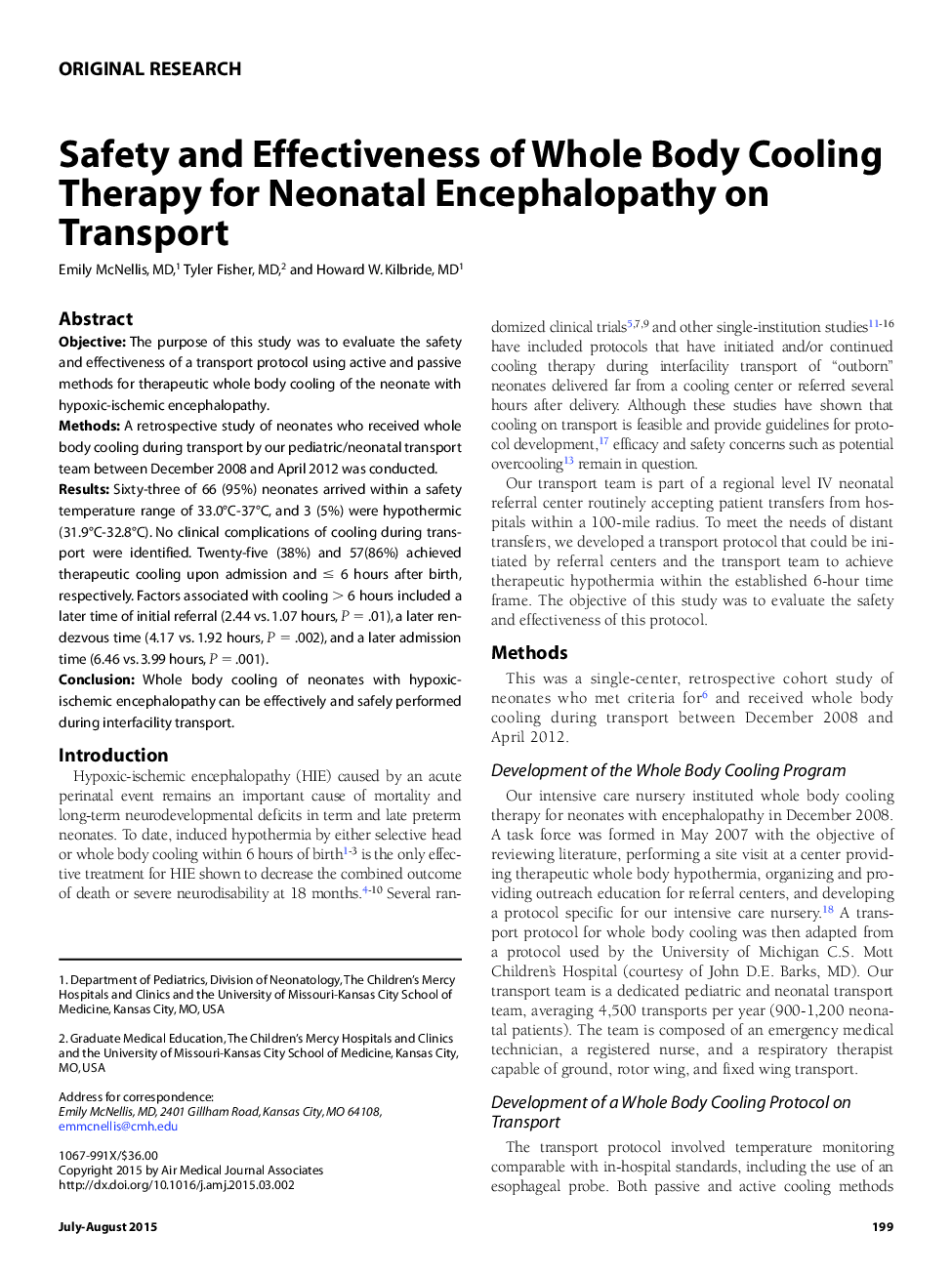| Article ID | Journal | Published Year | Pages | File Type |
|---|---|---|---|---|
| 2604481 | Air Medical Journal | 2015 | 8 Pages |
ObjectiveThe purpose of this study was to evaluate the safety and effectiveness of a transport protocol using active and passive methods for therapeutic whole body cooling of the neonate with hypoxic-ischemic encephalopathy.MethodsA retrospective study of neonates who received whole body cooling during transport by our pediatric/neonatal transport team between December 2008 and April 2012 was conducted.ResultsSixty-three of 66 (95%) neonates arrived within a safety temperature range of 33.0°C-37°C, and 3 (5%) were hypothermic (31.9°C-32.8°C). No clinical complications of cooling during transport were identified. Twenty-five (38%) and 57(86%) achieved therapeutic cooling upon admission and ≤ 6 hours after birth, respectively. Factors associated with cooling > 6 hours included a later time of initial referral (2.44 vs. 1.07 hours, P = .01), a later rendezvous time (4.17 vs. 1.92 hours, P = .002), and a later admission time (6.46 vs. 3.99 hours, P = .001).ConclusionWhole body cooling of neonates with hypoxic-ischemic encephalopathy can be effectively and safely performed during interfacility transport.
